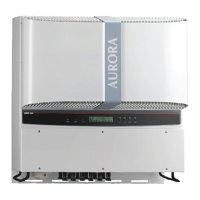
Do you have a question about the Power One Aurora PVI-10.0-I-OUTD-S-400 and is the answer not in the manual?
| Manufacturer | Power One |
|---|---|
| Model | Aurora PVI-10.0-I-OUTD-S-400 |
| Max. DC Voltage | 900 V |
| Nominal DC Input Voltage | 600 V |
| Number of MPPT | 2 |
| Maximum Input Current per MPPT | 16 A |
| Nominal AC Voltage | 400 V |
| AC Output Voltage | 400 V |
| Max. AC Current | 16 A |
| AC Output Frequency | 50/60 Hz |
| Topology | Transformerless |
| Cooling | Natural convection |
| Protection Class / Degree / Enclosure Rating | IP65 |
| Operating Temperature Range | -25°C to +60°C |
| Power Rating | 10.0 kW |
| Nominal AC Power | 10.0 kW |
| Max. DC Power | 10500 W |
Explains the meaning of warning and note symbols for safety and operational guidance.
Introduces installation compliance with regulations and general recommendations for use.
Explains the importance and benefits of solar energy generation.
Explains how AURORA photovoltaic inverters convert DC to AC power.
Lists the different model numbers of the AURORA inverter series.
Defines photovoltaic strings and arrays as key components of a PV system.
Details communication options like RS-485 for data transmission and monitoring.
Provides a technical overview, including block diagrams and transformer details.
Introduces the safety and protection features integrated into the inverter.
Explains the automatic disconnection system to prevent islanding operations.
Covers photovoltaic panel grounding and additional safety protections.
Emphasizes compliance with local and national electrical installation standards and laws.
Guides on checking the received package for damage and listing included items.
Provides considerations for choosing a suitable mounting location for the inverter.
Details the specific steps and hardware required for mounting the inverter on a wall.
Lists essential preparatory steps before performing electrical connections.
Outlines the safe steps for connecting and disconnecting the inverter from power sources.
Explains how to safely remove the front cover to access internal terminal blocks.
Provides tables to assist installers in selecting appropriate AC and DC cables.
Details the step-by-step process for installing the AURORA inverter unit.
Describes possible configurations for input channels, including parallel and independent setups.
Details the procedure for connecting the inverter to the AC power grid.
Explains how to connect alarm cables and optional RS485 communication cables.
Guides on how to select the correct grid standard for inverter operation.
Explains the procedure for grounding the DC input terminals of the inverter.
Details the process for replacing the CR2032 lithium battery inside the inverter.
Explains how to remove and replace the inverter's internal memory module.
Guides on how to replace the RS485 communication board.
Provides essential safety warnings regarding the operation of the inverter.
Details the steps to start up, connect to the grid, and commission the inverter.
Explains how to initiate inverter start-up using the physical side button.
Outlines the different methods for safely shutting down the inverter.
Describes automatic operation, interface components, and data transmission methods.
Lists the types of real-time operational data that can be accessed through the interface.
Details the types of data that the inverter stores internally.
Explains the function and meaning of the POWER, FAULT, and GFI LEDs on the inverter.
Summarizes the status messages and error codes displayed by the inverter.
Describes the information displayed on the LCD during grid connection checks.
Explains how error messages are displayed and interpreted on the LCD screen.
Details how to use display keys to perform electric parameter checks.
Guides on navigating the main menu and accessing the statistics submenus.
Details how to access total, partial, daily, and other energy production statistics.
Provides an overview of the settings menu, including password entry.
Explains how to set communication addresses for multiple inverters on the RS485 line.
Details how to adjust display light, contrast, and buzzer settings.
Covers management of service access, password, currency, date/time, and language settings.
Guides on configuring start-up voltage and performing system autotests.
Details on performing over/under voltage and frequency tests on the inverter.
Explains how to configure different alarm modes and relay contact behavior.
Details how to enable or disable the remote switch-off function using control signals.
Sets the duration for remaining connected after input voltage drops below the limit.
Allows setting parameters for the Maximum Power Point Tracker function.
Guides on programming custom error messages to be displayed on the inverter.
Shows how to display inverter identification and configuration details.
Provides steps for using the AURORA Communicator software to perform autotests.
Details how to connect the inverter using the RS-485 serial port.
Explains how to use RJ45 connectors for RS-485 serial communication.
Describes how to connect multiple inverters in a daisy chain configuration.
Provides information on the accuracy and resolution of measured parameters.
Provides basic steps to identify and resolve inverter malfunctions.
Details essential information required when contacting technical support.
Details the input voltage, current, and power specifications for the inverter.
Details the output power, voltage, current, and protection specifications.
Covers efficiency, consumption, operating temperature, protection, size, and weight.
Explains power reduction due to environmental conditions and input voltage.
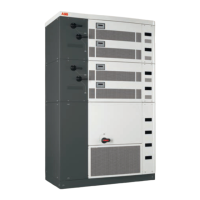
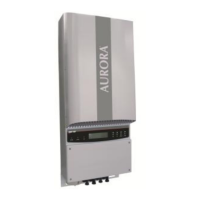
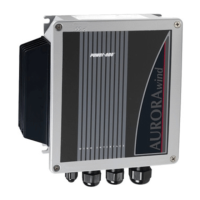
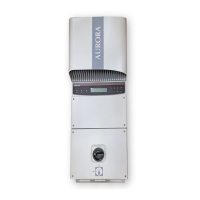
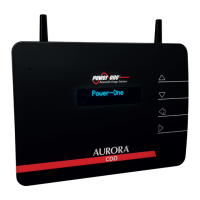
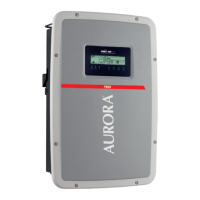
